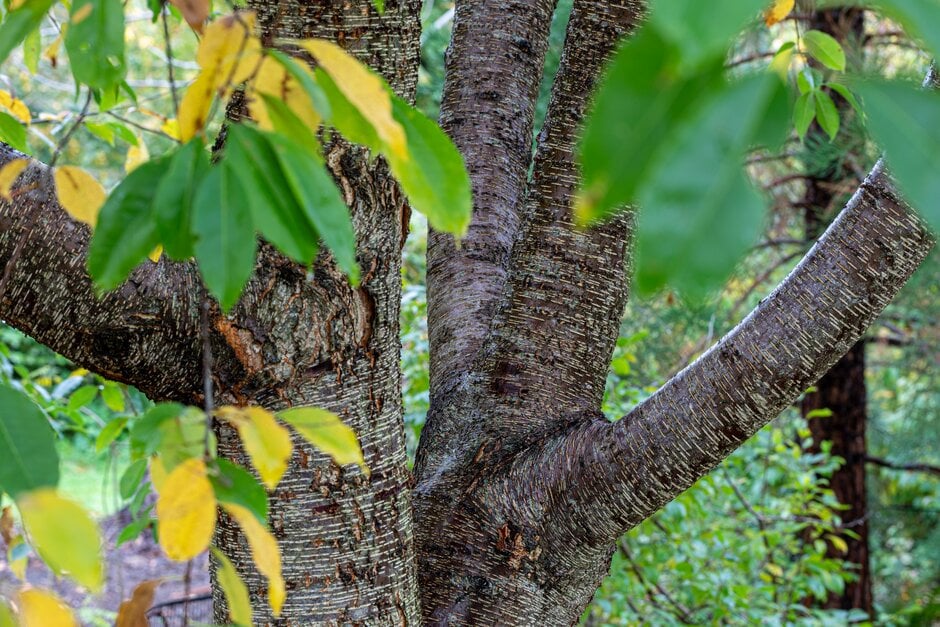Prunus serotina
black cherry
A medium-sized, spreading, deciduous tree or large shrub. Glossy, dark green, lance-shaped leaves with finely-toothed margins turn yellow in autumn. Fragrant white flowers are borne in hanging clusters to 15cm long in early summer and are followed by red fruits that turn black in winter
Other common names
black cherryblack choke
see morecabinet cherry
capulin
rum cherry
wild black cherry
wild rum cherry
Size
Ultimate height
Higher than 12 metresTime to ultimate height
20–50 yearsUltimate spread
Wider than 8 metresGrowing conditions
Moisture
Moist but well–drained, Well–drainedpH
Acid, Alkaline, NeutralColour & scent
| Stem | Flower | Foliage | Fruit | |
| Spring | Green | |||
|---|---|---|---|---|
| Summer | White | Green | Red | |
| Autumn | Yellow | Red | ||
| Winter | Black |
Position
- Full sun
Aspect
East–facing or North–facing or South–facing or West–facing
Exposure
Exposed or Sheltered Hardiness
H6Botanical details
- Family
- Rosaceae
- Native to GB / Ireland
- No
- Foliage
- Deciduous
- Habit
- Spreading branched
- Genus
Prunus can be deciduous or evergreen trees or shrubs with showy flowers in spring, and often good autumn foliage colour. Some have edible fruit in autumn, and a few species have ornamental bark
- Name status
Correct
How to grow
Cultivation
Grow in moderately fertile soil in full sun
Propagation
Propagate by seed or by softwood cuttings
Suggested planting locations and garden types
- Cottage and informal garden
- Wildlife gardens
Pruning
Pests
May be susceptible to cherry blackfly and other aphids, leaf-mining moths and caterpillars
Diseases
May be susceptible to silver leaf, blossom wilt and bacterial canker. High Risk Host for Xylella fastidiosa
Love gardening
Sign up to receive regular gardening tips, inspiration, offers and more
View our Privacy Policy
Get involved
The Royal Horticultural Society is the UK’s leading gardening charity. We aim to enrich everyone’s life through plants, and make the UK a greener and more beautiful place.

